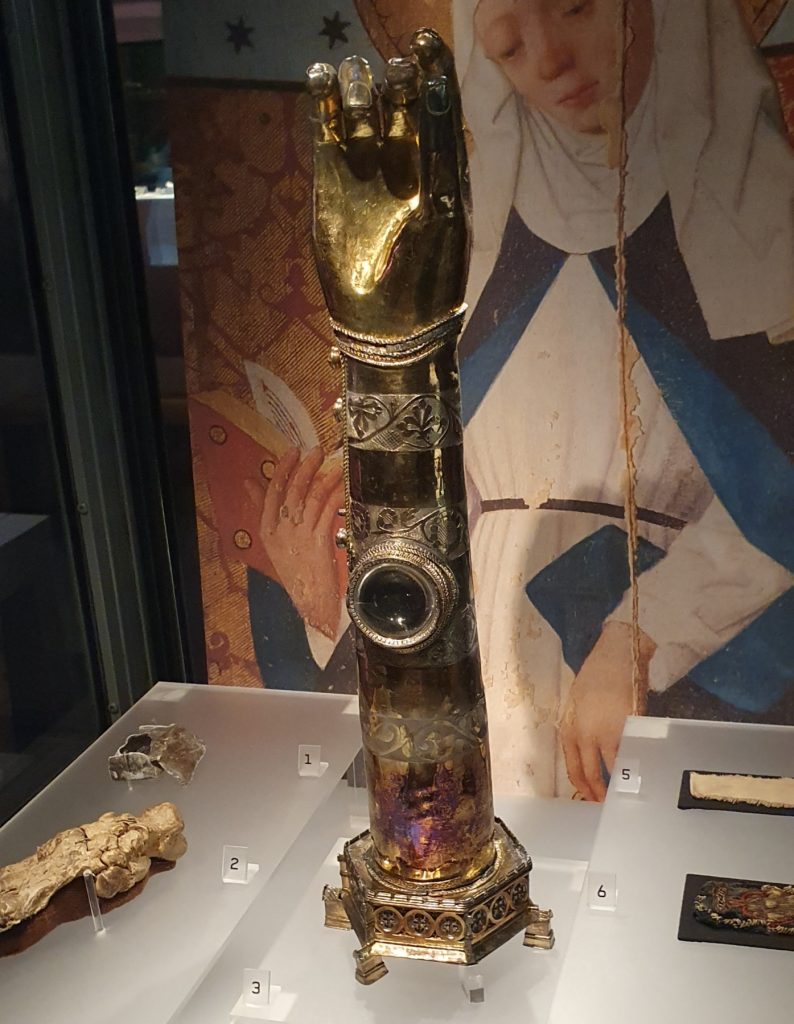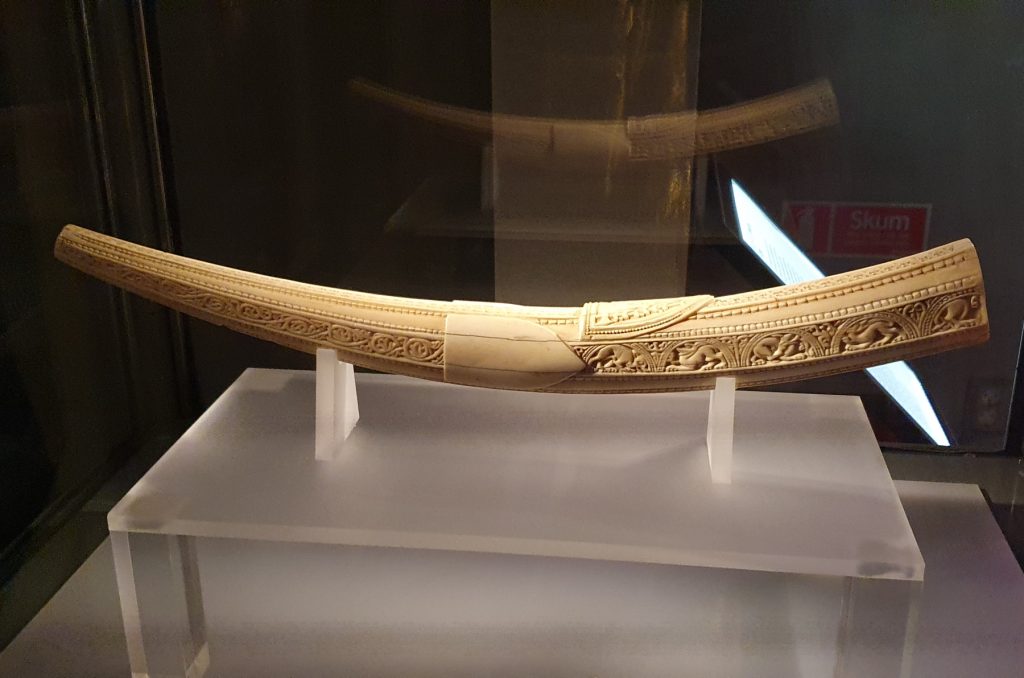I visited the Historiska museum back in the summer and only managed to see the Viking section. I raved about it to Mirinda, telling her how much she’d enjoy it. Today we visited and walked through the History of Sweden exhibit and learned a lot of condensed tales from the 2nd to the 20th century.
The history trail winds through rooms, decorated appropriately to match the general themes of each period of time. Years advance on the floor timeline, depicting the rulers, their reigns and various international events.

Blot-Sven took over from his brother-in-law Inge when he refused to keep up the pagan rituals. Inge was a Christian and wanted to convert his subjects. His subjects weren’t that keen and gave him a choice: keep up the fun pagan stuff or abdicate. He abdicated and made Sven king in his place.
The blot was the human sacrifice practised by various pagans throughout northern Europe. Anyone familiar with The Vikings TV series’ should remember the blot and how Athelstan narrowly escaped being voluntarily sacrificed.
Anyway, some sources claim that Inge came back, removed Sven and took over as King of Sweden again. Still other sources say that after Blot-Sven’s death, his son took over. The timeline did not say. Like the arrow of time, we continued our journey.
Moving on to the 14th century, Birgitta Birgersdotter (c 1303-1373) had a vision. It was of a convent at Vadstena. Married at 13 to Ulf Gudmarsson in a political move to merge two big land owning families, she bore eight children, six of whom survived infancy. One of her daughters, was beatified as St Catherine of Sweden. Catherine was clearly carrying on the family tradition because, Birgitta also became a saint.
She and Ulf decided to walk the Santiago de Compostela pilgrimage. Ulf didn’t survive and Birgitta the Widow decided to devote her life to the poor by praying a lot. St Birgitta never saw her convent, but it was built and became one of the biggest landowners in Sweden and made the church a lot of dosh.
A long time later, a farmer, ploughing one of his fields near Linköping, unearthed an arm.

Turned out to be a reliquary which contained a bit of St Birgitta. When it was opened, a humerus was found inside. Was it hers? We will never know.
A little later along the timeline, we have the amazing Queen Margareta (1353-1412) of Denmark, Norway and Sweden (which included Finland at the time). During her reign, she formed the Kalmar Union which brought together the Scandinavian countries for around 100 years.
Historian, Knut Gjerset called her “…the first great ruling queen in European history.“
She chose her great-nephew Bogislav as her successor. She didn’t like the name Bogislav and said he could be her successor if he changed his name to Erik of Pomerania. Erik had an extraordinary horn of ivory.

There were a lot more fascinating stories and strange people from history, but I reckon that’s enough. Suffice it to say, we thoroughly enjoyed the Swedish History Museum and will have to return for the other sections.
We also enjoyed a sumptuous Italian meal just around the corner at Fiore. Highly recommended and a definite requirement after so much history.



I wonder what the dna on the bone would find? Brigita had lots of kids – maybe related to the current king and queen?